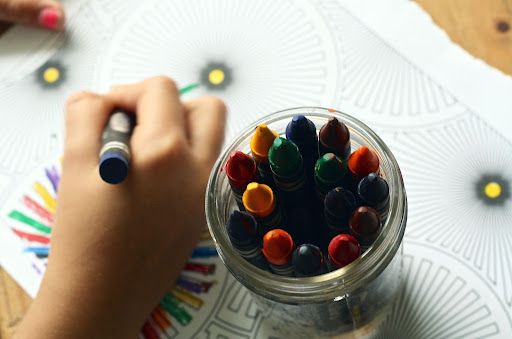How to Help Your Child With Disabilities Discover the Arts
by Lillian Brooks
As the parent of a child with a disability, you want to do all you can to help your little one thrive!
One way you can support your kid’s success is introducing them to the arts. Creative
pursuits can help instill confidence in kids, give them unique ways to express themselves, and hone practical talents, from fine motor skills to problem solving. Read on to learn how you can help a young person with disabilities discover a creative hobby they love.
Find an activity your child enjoys that also benefits them.
Help your child find a style of art they truly enjoy by exposing them to various options. When introducing your little one to the arts, think about what activities might benefit them. For example, playing music can help children improve memory skills. Meanwhile, dance can help special needs kids enhance flexibility and fine motor skills, while also encouraging creative expression and boosting confidence.
Drawing is another simple yet beneficial passtime. Little ones will be able to improve fine motor skills, finetune visual analysis, and boost concentration. Maximize the positive impact by encouraging your kid to get into graphic novels or comics. Scholastic explains that this kind of sequential art helps to motivate kids who may otherwise be reluctant readers, boosts critical thinking, and teaches storytelling abilities.
Comics can also be a great learning tool for little ones with disabilities. A story about their favorite superhero can teach life lessons like the importance of teamwork and perseverance, for example. There are also plenty of kids comics related to educational topics, from geography to math and science. BookRiot offers a comprehensive roundup of the best educational comics for kids to inspire you.
Create a space for your child to practice their craft and get them the tools they need.
Once your child has discovered an artistic pastime they enjoy, nurture it. You can start by giving them a dedicated space where they can practice their art. If you have an unused area of your home, like a guest room or garage, you might transform it into their personal creative studio. Redfin notes that increasing the usable space in your property can also increase its value, making this a smart investment in case you ever sell.
Once you have a suitable space set up, equip it with the tools and supplies your child needs to create their art.
For example, if they’ve taken up dance, you might add hardwood floors, mirrors, and a ballet bar along the side of the walls. Alternatively, if your child is into creating comics, an easel with paint brushes, drawing pads, and pencils are needed. If necessary, look into adaptive art supplies that suit your kid’s unique physical needs.
Keep your child motivated with the right inspiration.
As your child explores their newfound passion, continue to offer encouragement. Keep them inspired by finding role models they can look up to. If they’ve expressed an interest in comic creation, for example, head to the Comic Book Hideout. You’ll find a huge array of comic books and graphic novels to inspire them. Seeing the wide variety of comics available to them will help kids realize the limitless potential of this medium.
You can also look up the creators of your children’s favorite comics to see if they might serve as role models. Healthfully explains that positive role models are valuable for kids, providing inspiration for them to pursue their dreams. The comic book world also offers plenty of opportunities for little ones to meet their idols, for example by attending Comic conventions and events together as a family.
The right artistic pursuit can help your child with disabilities discover newfound confidence and develop practical life skills. Follow the steps above to help your little one find a hobby they truly enjoy!


Wow, this piece of writing is nice, my younger sister is analyzing these kinds
of things, therefore I am going to let know her.
my blog – student